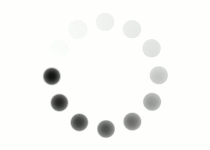From mountain lions to star fish to whales and snails and beetles, the diversity among animals is incredible. Depending on certain criteria, like symmetry and the way new offspring are created or how and what an animal eats, they are grouped into phyla with other animals that are very similar.
Do you remember the animal phyla associated with body plans that are asymmetrical, radially symmetrical, and bilaterally symmetrical? Once you have your answer, click the Show Me button to see if you're correct.

Animals that are asymmetrical are classified into the phyla Porifera and Placozoa. Animals that are radially symmetrical are classified into phylum Cnidaria. Animals with bilateral symmetry are classified into all the other animal phyla including but not limited to Platyhelminthes, Annelida, Nematoda, Arthropoda, Mollusca, Echinodermata, and Chordata.
Of all the above phyla, the two that consist of the simplest animals on the planet are Porifera and Placozoa. Out of these two phyla, Placozoa contains the smallest animals and the fewest types.
At this point, scientists have only discovered two animals that belong in phylum Placozoa--Trichoplax adhaerens and Treptoplax reptans. Both are extremely small animals that live in warm oceans, are only about 2-3 mm in diameter and have bodies that can be described as "squishy blobs."
Click this image of Trichoplax adhaerens, to read a little about the history of this tiny animal.
Question
Why is this tiny "blob" is considered an animal? What characteristics must it have in order to be classified as an animal?
![By Oliver Voigt (Oliver Voigt) [CC-BY-SA-2.0-de (http://creativecommons.org/licenses/by-sa/2.0/de/deed.en), GFDL (http://www.gnu.org/copyleft/fdl.html), CC-BY-SA-3.0 (http://creativecommons.org/licenses/by-sa/3.0/) or CC-BY-SA-2.5-2.0-1.0 (http://creativecommons.org/licenses/by-sa/2.5-2.0-1.0)], via Wikimedia Commons](https://s3.amazonaws.com/cms.accelerate-ed.com/image/3dc609d1-caf2-438e-947f-097681c014e5.png)
